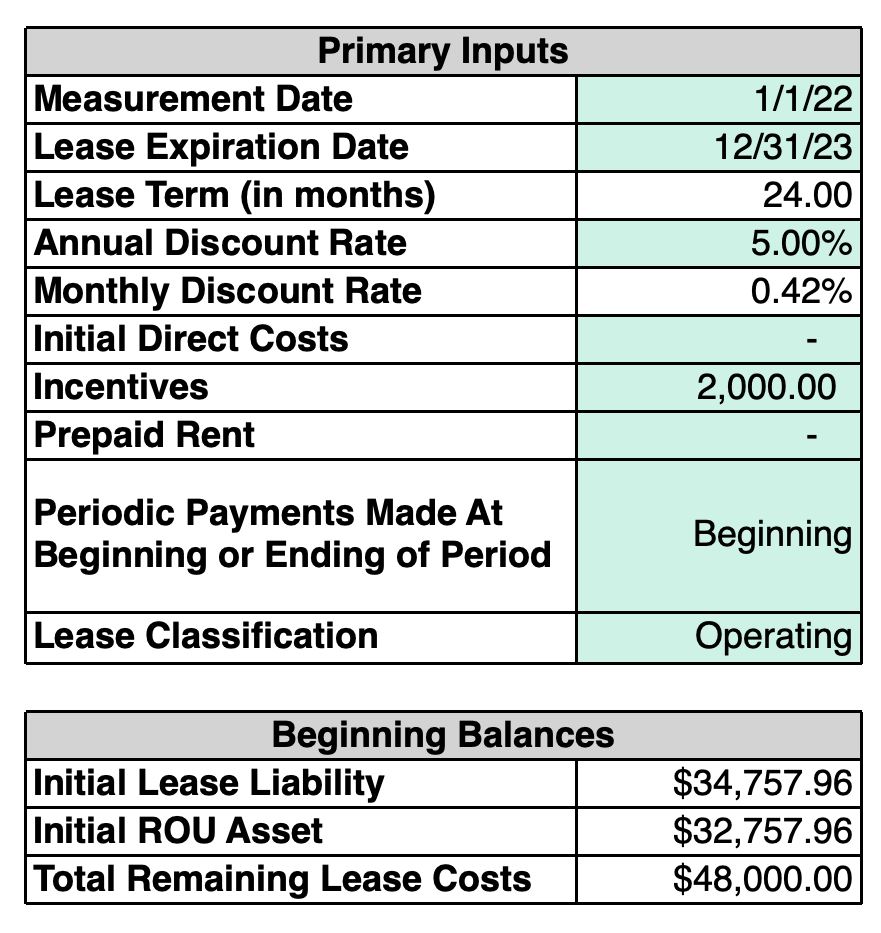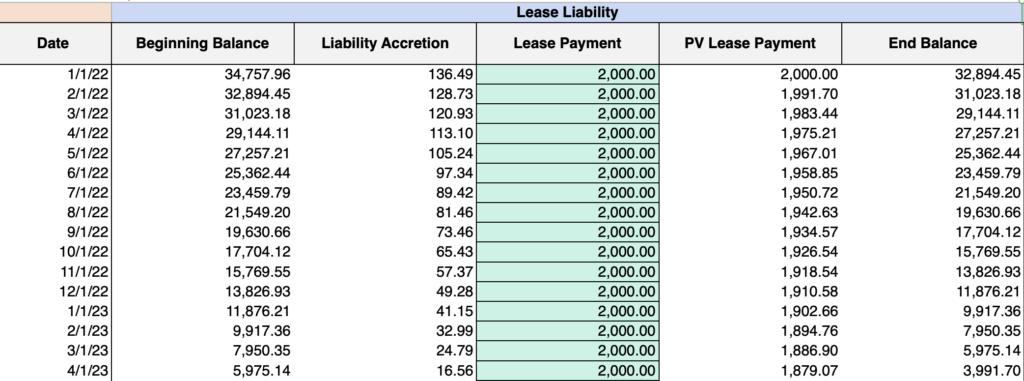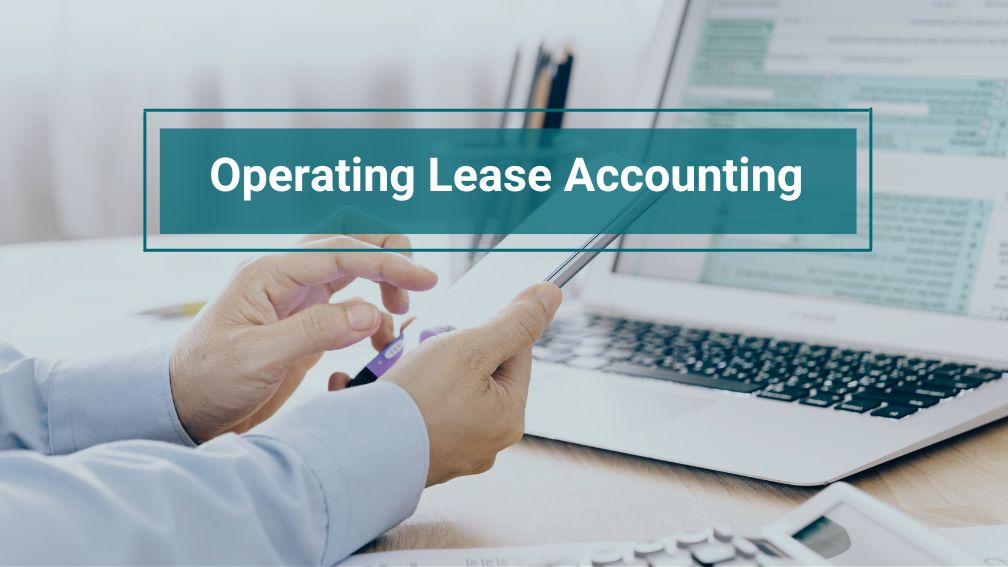2 Examples of Operating Lease Accounting Under ASC 842
Last Updated on February 9, 2023 by Morgan Beard
At the end of the 2020 fiscal year, the Financial Accounting Standards Board (FASB) made it mandatory for private, public, and non-profits to comply with ASC 842. After nearly two decades in development, ASC 842 aims to improve organizational transparency. Under ASC 842, all operating leases must be recorded on your balance sheet.
What does ASC 842 mean in practice for you and your team if you lease equipment or real estate under an operating lease? This piece will illustrate some examples of best practices under ASC 842 of accounting for operating leases. If you’re interested in seeing some examples of how ASC 842 treats finance leases, check out our sister post here.
What is an operating lease?
Operating leases are a type of contract that stipulates the lessee has the right to use said asset for a pre-determined period, while the lessor still owns the asset. In return for the right to use the asset, the lessee must make payment to the lessor over the economic life of the asset. In order to determine if you have an operating or finance lease, you’ll want to conduct a lease classification test.
How to determine if it’s an operating or finance lease?
The lease classification test has five criteria from which to determine if it is a finance lease or an operating lease under ASC 842.
- Transfer of ownership – If the lease transfers ownership of the underlying asset to the lessee by the end of the lease term, then it is a finance lease.
- Option to purchase -If the lease grants the lessee an option to purchase the underlying asset that the lessee is reasonably certain to exercise, then it is a finance lease.
- The lease term & economic life of said asset – If the underlying asset endures a major part of its economic life during the lease term, then it is a finance lease.
- The present value exceeds the fair value – It is a finance lease as long as the present value of the sum of the lease payments and any residual value guaranteed by the lessee that is not already reflected in the lease payments exceeds the fair value.
- Specialized asset – If that is the case and it is expected to have no alternative use to the lessor at the end of the lease term, then it is a finance lease.
Accounting for operating leases
Prior to ASC 842, operating leases were hidden in the footnotes. Now, all operating leases must be accounted for on the balance sheet. The lease expense is recorded in a single lease cost generally on a straight line basis over the lease term.
The first step to accounting for operating leases under ASC 842 is to determine the balance of the lease liability and right-of-use (ROU) asset. This dual-model approach requires finance teams to log both the lease liability and the right-of-use asset, where:
- Alease liability is the total financial obligation owed by the lessee toward the lessor.
- A right-of-use asset is a valuation of the period of a lessee’s access to an asset.
The lease liability is a monetary liability, outlining the lease payments, interest expense, PV lease payment and ending balance.
In order to measure the ROU asset, you’ll want to amortize based on the difference between the periodic straight-line lease cost and the interest. The straight-line expense is included in the income statement and helps show a lease’s direct impact on cash flow in a given period. The following equation outlines how to calculate the straight-line expense:

What is a lease liability under ASC 842?
As opposed to the straight-line expense, lease liability refers to the lessee’s financial obligation to make lease payments. This differs from straight-line expensing method of simply providing the average payment owed over a given period, as it involves discounting future payments.
Payments in the future are less expensive than payments in the present, all else being equal. Paying $1,000 in 10 years is worth less than a payment of $1,000 today. There are two big reasons to explain this:
- $1,000 in cash today can be used to make interest over 10 years, which entails an opportunity cost to spending it now.
- $1,000 in cash in 10 years can be obtained by earning interest on a lower amount over the intervening decade.
To calculate your lease liability as a lessee, you will need to know your lease payment, lease term, and discount rate (i.e., the rate of interest). Then, you calculate your initial lease liability with the following equation:

Take the total of all lease payments throughout the operating lease payment period, and multiply it by the discount rate/interest rate. As you proceed with a lease, you can then calculate your lease liability at the end of a period.
What are right-of-use assets under ASC 842?
The right-of-use asset is an asset that provides a valuation of the lessee’s right to occupy, use, or hold an asset during the period of an operating lease. ROU assets are intangible and refer to the value gained by a lessee through their access to an asset over a period of time.
At first, it might be easy to think that ROU assets may simply be the current lease liability. But the lease liability doesn’t accommodate initial costs and incentives associated with an operating lease, which should be priced into the asset’s valuation. So the initial ROU asset valuation should price these in through the following calculation:

At the end of every period, the lessee needs to subtract from the ROU asset the drop in value associated with holding it for a reduced period. That means adding together the interest accrued and straight-line expense for the period, and then subtracting this total from the ROU asset value as it stood at the beginning of the period. This tells you the value of the ROU asset at the end of a period.
Now, with our definitions covered, let’s jump in with two examples of how real people will calculate and use these operating lease accounting figures.
Example 1: Leasing an excavator
Bill is a construction contractor looking to rent a new excavator. Charles, a friend of Bill’s, is a dealer who can offer Charles the vehicle lease.
As a friend, Charles offers Bill a two-year lease commencing on January 1, 2022, to be paid in monthly installments of $2,500. Charles is happy to waive any initial costs associated with a lease and offers to throw in an extensive up-front maintenance check worth $2,000 to give Bill peace of mind.
Bill and Charles sit down and look over the books to see the costs associated with the equipment lease agreement.

The total lease payments Bill would pay to Charles over the two years would be 24 x $2,500, or $60,000. However, the maintenance check would mean that the monthly straight-line expense is lower than the lease payment.
With the initial lease liability, Bill can calculate his ROU asset value for the excavator. He uses the ROU asset calculation, which means adding the value of the maintenance check.
Let’s say Bill takes up Charles’s offer and leases the excavator. One month later, Bill revisits his books to look at his outstanding lease liability and ROU asset.
But the lease liability differs from the straight-line expense. The lease liability doesn’t cover incentives or initial expenses and has to accommodate the interest rate. Assuming an annual rate of 5%, the monthly rate would be roughly 0.42%. Bill’s outstanding lease liability can be calculated by taking the liability from a month ago, adding interest accrued on that balance, and subtracting the payment he’s made. This calculation looks like this:

Example 2: Leasing company computers
Jake is a founder who’s growing his startup rapidly and needs a lot of computers for his team. He approaches Mary, who runs a company that leases out computer hardware to offices.
Mary gives Jake a quote for 20 computers under an operating lease, with Mary’s team handling maintenance, security, backup, and technical issues on behalf of Jake’s team. She quotes Jake a lease payment of $1,500 per month, with a contract of four years commencing on January 1, 2022.
However, Mary has to also charge a one-off setup cost of $1,000 to install the computers. To sweeten the deal in the face of this, she offers Jake an incentive in the form of a software bundle with a license cost of $2,000 for a business of Jake’s size.
From this, Jake quickly sources the following figures:
- Lease length: 48 months
- Monthly payment: $1,500
- Total payments: $72,000
- Straight-line total: $70,000
- Straight-line monthly average: $1,458.33
- Interest rate (monthly): 0.3%
Jake opens a spreadsheet and calculates his initial lease liability and ROU asset. He finds the following:
- Initial lease liability: $62,330.43
- Initial ROU asset: $64,330.43
To understand how much these values will change over time, Jake looks at what will happen to them at the end of month one.
Jake knows the main thing he needs to do is get the interest added onto his initial lease liability balance, which he can then add to the lease liability and subtract from the ROU asset along with his regular payments. He then finds:
- Liability interest (month one): $186.99
- Lease liability (month one): $61,017.42
- ROU asset (month one): $64,143.44
Accounting for Operating Leases
ASC 842’s need to include lease liability and ROU assets can initially seem like a high bar for operating lease accounting. But, as we hope we’ve shown with the above two examples, these calculations can quickly become a routine part of monthly bookkeeping and help give you and your team better insight into the true value of your leasing arrangements.
If you’d like to learn more, take a look at our comprehensive lease accounting resource hub to find out about key definitions and calculations under ASC 842.
